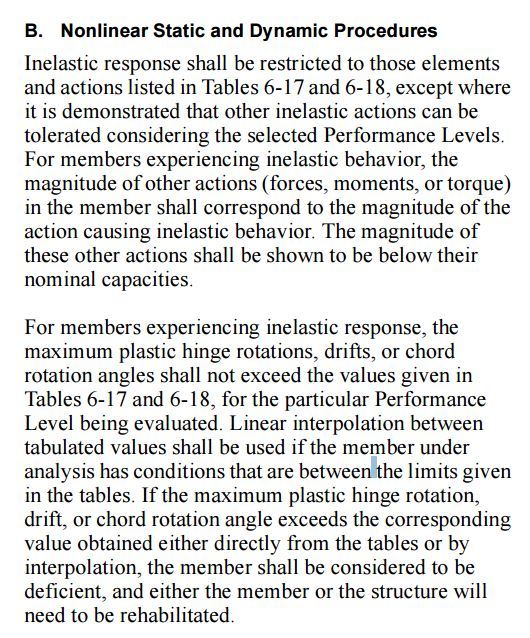Hi all
In fema 273 and ASCE 41, the modelling parameters and acceptance criteria of concrete flexure members are given as rotations.
I do not know what is meant by rotation. is it the rotation of the plastic hinge or the chord rotation of members (Drift/L).
In fema 273 and ASCE 41, the modelling parameters and acceptance criteria of concrete flexure members are given as rotations.
I do not know what is meant by rotation. is it the rotation of the plastic hinge or the chord rotation of members (Drift/L).

